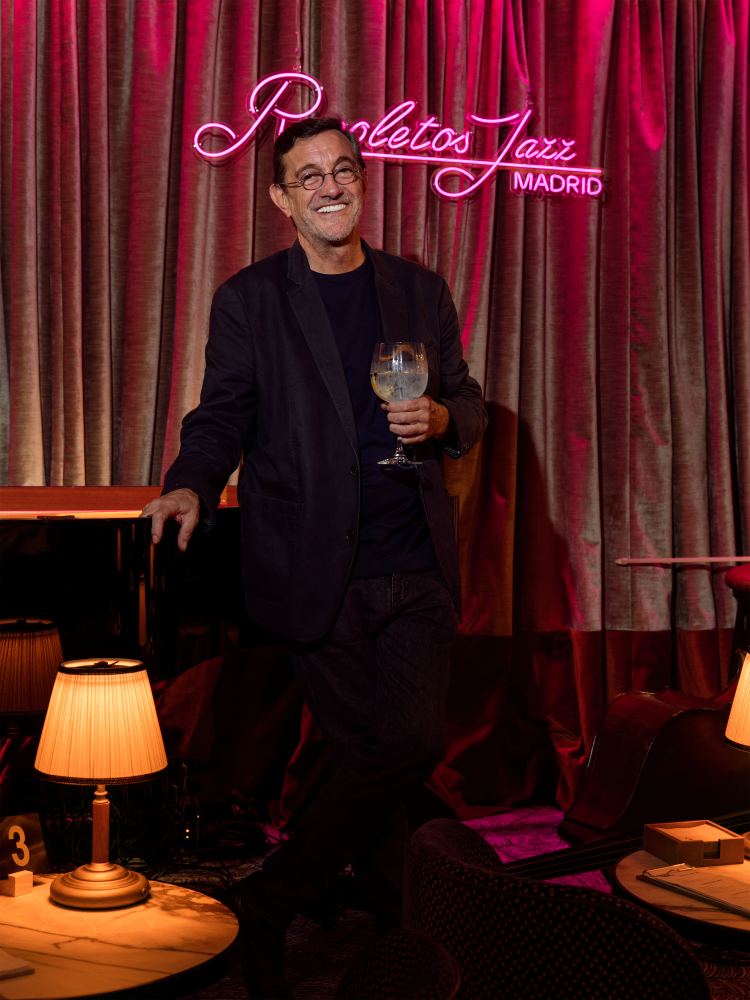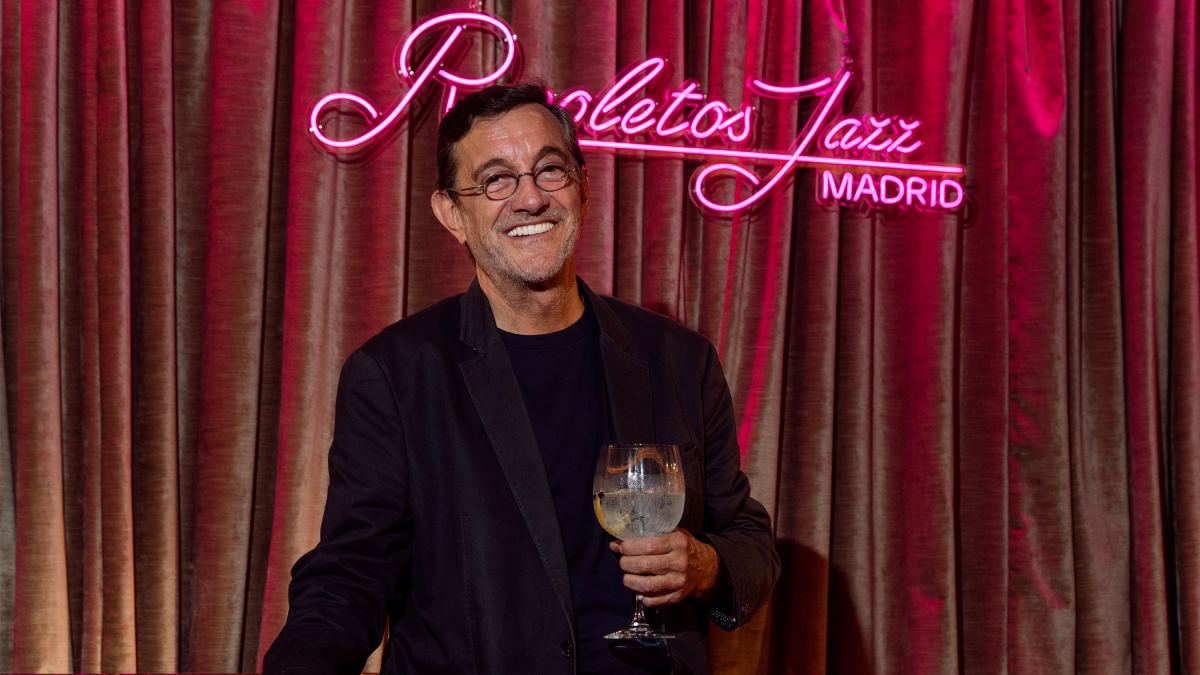Click here to read the Spanish version.
Javier Colina (Pamplona, 1960) is one of the most prestigious international jazz (and flamenco) double bass players. The list of musicians with whom he has collaborated is endless and impressive. For example, George Benson, Dizzy Gillespie, Jerry González, Toumani Diabaté, Compay Segundo, Carlos Núñez, Carmen Linares, Enrique Morente, Tomatito or Juan Perro… or Bebo Valdés and Diego El Cigala, with whom he played in the legendary Lágrimas negras. Now he has released, together with the Valencian pianist Albert Sanz, Rodizio musical, an album of versions of Brazilian music recorded live on two consecutive nights at the Recoletos Jazz Madrid, the club located in the basement of the AC Hotel Recoletos, and in which also ended up participating personalities such as Silvia Pérez Cruz, Josemi Carmona, Antonio Serrano and Israel Suárez “Piraña”.
The title of the album has Brazilian food connotations…
Indeed, it is because it represents a little bit what happened here the night we recorded the album, because different musicians started to appear, representing different genres, to musically “feed” the music-hungry diners. It all happened in that… messy way, and it seemed to us that there were similarities with those kinds of Brazilian restaurants, only that instead of meat there was music.
Does food tend to be something that inspires you musically?
To begin with, I am from Pamplona, and there we like to eat well and we care about the quality of the food. Food is the only obligation that animals have, and we humans must feed ourselves better, if we can, and with delight. Food is very important, both for the body and for the soul, which is what music and the arts provide us with.
Why did you want the album to be about Brazilian music?
No, it is not something we decided beforehand. We had already been playing that music and other pieces for several years. What happened is that we were asked to record a live album and what we have published is a homogeneous selection of what we played those two nights. We did not “decide” to make an album of Brazilian music, but it is a work of improvisation that is usual for us in which we started from music made, almost all of it, by Brazilian composers.
Has food ever made you interested in the music of a country or region?
Just because the food in a place is good doesn’t necessarily mean that the music is good; and vice versa. For me, what I really like are the songs and the dishes. Neither all the music of a place nor all its gastronomy in general. And the same happens with concerts: I may like some songs and not others.

Something happens in jazz clubs that doesn’t usually happen in rock clubs, and that’s that they also usually eat…. How do you manage that?
That fashion emerged in the United States because nowadays, unfortunately, people lead a life in which they don’t have time to do many things and they want to do them at the same time. They like jazz and they like to eat, and since they don’t have time for each thing, they do both at the same time…. Man, it always seemed a bit strange to me, but well…. I’m sure there is music that goes with food and music that doesn’t and vice versa. If it’s just a snack I’m fine with it.
Jazz is a music for listening to nuances, but playing while listening to the clinking of glasses and cutlery. It must be annoying…
Yes, that’s true, that has always happened throughout the history of jazz: you had to combine music with business, for an establishment to survive, and you had to accept a certain type of people, even the drunks in the back. Bill Evans’ records recorded at the Village Vanguard even had the sound of glasses falling over, because everybody had to be welcomed. As Lou Bennett used to say: “He who pays the entrance fee, let him be welcome”.
The good part is that jazz is still preferred to be seen in small venues, with less than 300 spectators.
I am also an audience and I don’t mind paying for that closeness, because it’s a feeling that only happens that way. Neither in any theater, nor in any hall of 400 or 500 people: that’s what happens here, in the album, with that proximity. How do you keep it? That’s the tricky thing, but there are people who also think like me. I remember seeing Ron Carter many years ago, in Barcelona, at the Luna restaurant, and it was 90 euros a ticket, but I had Ron Carter two meters away from me. I want more of that.
The promotional leaflet for this album stresses the importance of talking about songs, but, except for “Cariñosa”, the song sung by Silvia Pérez Cruz, there is no singing on the album.
They are pieces in the form of a “song”. They have that simple structure of verse and refrain or verse and interlude. It’s a type of structure that comes from Spanish and Portuguese poetry. And in jazz we turn it around to improvise. Even if it is not sung, the format is that of a song.
And how did jazz come into your life? What was it that you heard that made you want to pursue this?
I’m not a person who makes that kind of decisions, but the truth is that I played with friends in a bar in Pamplona, and we played many things and in many styles, and when a jazz piece came up, we improvised. What caught my attention was not that it was jazz itself, but the way of playing it, that is to say: the improvisation and the way of improvising, which is not the way it is done in rock on two chords. Here there was a structured way and I was struck by the fact that the piece could be done as many times as necessary and you could always interpret it in a more or less different way.
Photo: Nani Gutiérrez.

